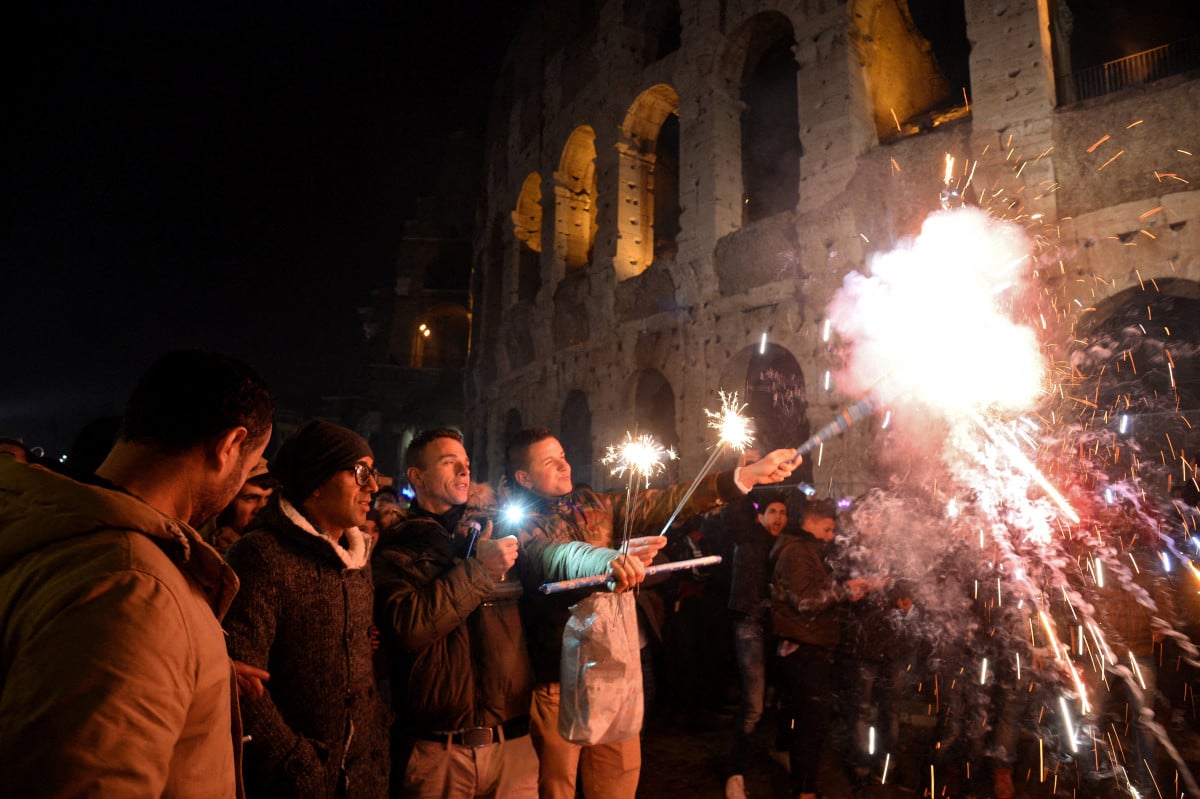Eating lentils
At many an Italian New Years Eve party, small dishes of lentils are handed out to guests just before the countdown.
Lentils, or lenticchie, are believed to bring good luck, as they’re said to represent small coins and therefore bring wealth and prosperity in the year ahead.
The tradition of eating them at New Year – shortly after midnight – is said to date back to Ancient Rome. The more you eat, the luckier you’ll be in the coming year.
Wearing red underwear
If you’re hoping for an Italian romance, the only way to make sure Cupid shoots an arrow in your direction during 2024 is to deck yourself out in red underwear on New Year’s Eve.
Some say that the charm only works if the undies are a gift, while others firmly believe you have to give them away before daybreak.
Either way, the majority of Italians firmly believe that the custom is linked to fertility or good luck in your sexual endeavours (60 percent agree with this statement, at least according to a survey carried out by drinks company San Pellegrino).
More generally, red underwear will apparently help to fend off evil spirits and negativity, bringing you happiness in the coming year: the colour red has been used for centuries by superstitious Italians to ward off disaster.
Throwing things out of the window
Watch out for falling objects – in some southern parts of the country, it’s traditional to throw possessions, particularly crockery, out of your window to show that you are ready for a new start in the new year.
As national treasure Totò says in New Year’s Eve comedy The Passionate Thief:
– San Silvestro, roba vecchia, defenestro!
– On New Year’s Eve, out of the window old stuff must leave!
If you’d rather that new start didn’t involve arguments with the neighbours about why you threw a plate at their head in the middle of the night, an alternative tradition is crashing pots and pans together at your front door, to frighten away evil spirits (see below).

Making noise
One thing we can guarantee is that, unless you’re in the middle of the deepest Italian countryside, New Year’s Eve is going to be a noisy affair. And the further south you get, the more incredible the noise levels.
Fireworks, music, the beeping of horns, and perhaps a few smashing plates all add to the cacophony in the streets of towns and cities as the clock strikes midnight. Fireworks in particular are likely to be going off all evening ahead of the start of the new year, and even during the day.
Few people are likely to be thinking about the festivities in these terms nowadays, but if you ask an older Italian you might be told that, according to superstition, demons and evil spirits don’t like loud noises, so all this ensures they’ve been well and truly scared off before the new year begins.
Making a racket at your front door in particular is to be encouraged, as this deters evil spirits from entering the house along with the new year.
A swim in the sea (or the River Tiber)
If you still have any energy left the next morning, one surefire way to zap your Prosecco hangover is with a freezing-cold dip in the sea.
Along Italy’s warmer southern coasts, and occasionally further north, you’ll see groups of hardy swimmers braving the water early on the morning of January 1st in a longstanding tradition that’s said to bring health and prosperity in the new year (or at least a clear head on the first day of it).
If you’re in Rome, you could instead join in with the more questionable tradition of jumping into the River Tiber on New Year’s Day, which has been increasingly popular since it began in 1946.



 Please whitelist us to continue reading.
Please whitelist us to continue reading.
Member comments